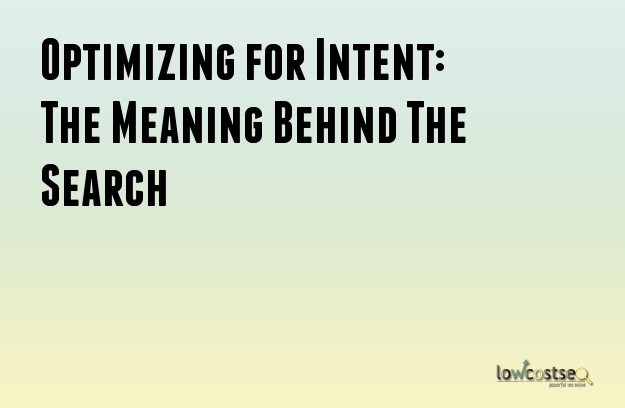
In the world of SEO, it’s very easy to get think about search queries as a case of matching of keywords. After all, effective keyword analysis and implementation forms the backbone of any successful strategy, whether its paid or organic.
But – is there more to it than this? After all, people can search for the similar terms and have very different intents. If you’re aiming your SEO at both, are you equally suited to meet there needs?
Arguably, it’s better to ensure you target people that are more likely to find your content, website or service relevant. When you really get down to it, 100 genuine customer is better than 1,000 visitors that never converted.
So, how can you optimise for intent?
Filter Your Keywords
Just because a keyword has a big search volume, doesn’t mean it’s a good idea. Let’s put it this way. The more specific someone’s intent is, the more specific their search terms will be. There’s a difference between “car dealerships in my area” and “Porsche 911 for sale”.
One is simply browsing and wants a general car website, while the other expects to see a very specific product on the other side of the link. Sometimes you don’t want to simply apply every broad keyword possible. The user looking for car dealerships isn’t ready to make a choice – they won’t be too happy with a business that only specialises in a specific model or brand.
Instead, it’s best to not forget about your long-tail options. As many SEO experts already know, long-tail keywords represent over 70% of all searches.
https://d1avok0lzls2w.cloudfront.net/img_uploads/long-tail.gif
One way to do this is to simply find your possible long-tail keywords and filter out any irrelevant terms. From what is left, create a table and group the keywords with matching intent. This will give you a broad idea of what users are looking for and you can begin to match respective terms to specific landing pages – now you’re directing users based on their intent, not yours. Much better!
Likewise, you might find there are some terms that you simply don’t have a good match for. Consider this a strong sign to create some new content, if it’s related to your website, as you may be losing traffic because of this.
Understand The Sales Funnel
The sales funnel is a concept that’s vital for many businesses but, even if you don’t directly sell a product, it’s something you should pay attention to. In many ways, it’s similar to the user journey (from finding your website to converting), so it has plenty of impact in SEO.
Pushing a hard sale on someone who is just browsing is never a good move – you’re not matching their intent and they will feel unwelcome, leading to high bounce rates.
Specifically, knowing where along this funnel your audience sits can help you tailor your content. More specifically, you will have different strategies for different areas of the funnel, with custom SEO solutions that meet these specific intents.
Single Grain offers one of the most clear depictions of such a funnel:
https://www.singlegrain.com/wp-content/uploads/2016/07/Single-Grain-Marketing-Funnel.jpg
Let’s use a clothing store as an example: how would an SEO agency implement an effective sales funnel? Well, for the awareness level, we have organic search. A clothing store can create content, whether its blog posts, fashion guides videos or something else entirely, that directly appeals to the audience. This doesn’t generate much in the way of sales, but it increases the brands viability – primarily through the traditional SEO and marketing methods we all know and love.
This will increase awareness and users may come back – or you can use remarketing – to move them further down the funnel.
So, what’s next? For a mid-level of interest, you can consider more specific content. This is where people may start to look at broader landing pages. They may want to buy a new sweater, but they haven’t made any important decisions in this process. This will be similar to the previous step, but the content gets more niche.
Again, this all moves people along the path. This is where a special sale, promotion or campaign could prove very powerful.
For the bottom-level of the funnel, we have users that know what they want and are close to making a purchase. This is where category and maybe even item-specific SEO comes in to effective. PPC is more effective here.
How effective is it? Even for small businesses, it can boost e-commerce sales by 50%. A sales funnel is simply a way of looking at how various parts of your audience relate to your website – not everyone is already familiar – so your SEO and content should be suitable across the range. Otherwise, you simply lose these people the moment they hit your site and find it is not for them.
Putting It All Together
Intent is something you need to always keep in mind. Regardless of the search volumes, gaining traffic will mean nothing if you don’t consider what the user is looking for. If you don’t have the right answers, your SEO is often going to waste.
From targeting the right parts of your audience to understanding the meaning behind keywords and queries, there is always something you can do. You can even go further and include the likes of mobile devices – after all, someone on the move likely wants to quickly find your physical store (if they are within the area) and walk in. Set your mobile page to clearly state this info, or use geo-targeting advertising to attract local users.
